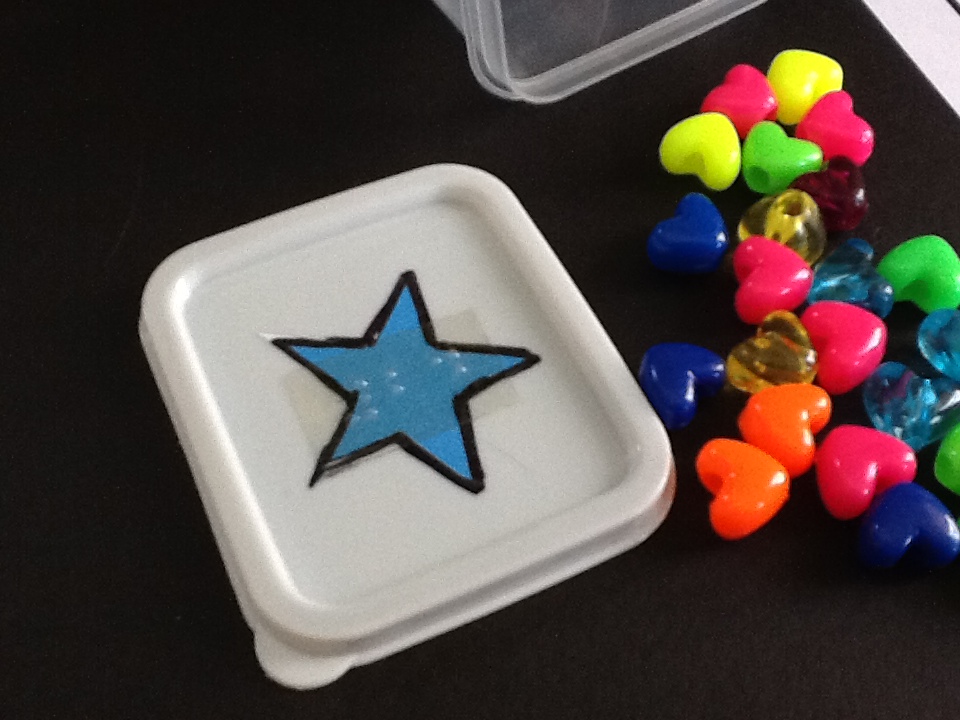The goal of this activity is to give both braille and print students a chance to practice showing different ways to represent a number.

Materials
- Small boxes ($$ store) These can be small snap-lid containers, or shaped containers like hearts for Valentine’s Day, plastic eggs for spring, etc.
- Small items to count (beans, beads, buttons, candy corn, candy hearts, jingle bells, etc) (see picture)
- Braille label paper to use for the braille number labels
- Braillewriter and paper (optional for braille student)
- Manipulatives or tools for counting (e.g. abacus, EZ abacus, base ten cubes, tactile tally marks, hundreds board, APH scorecard, real coins, etc.)
- iPad (optional)
- Tally Worksheet (see image below)
Use some type of small container (At the $$ store you can get plastic eggs for use in spring, Valentine boxes, or simple small snap-lid trinket boxes) and braille numbers on them (I used braillable label paper). The classroom teacher let me know to keep the numbers in the teens-to high 20’s. I am not sure if these little boxes would hold more than 30 countable objects. To keep small beads and buttons from spilling onto the floor with little hands, you could thread them through a piece of yarn or thread and knot each end to keep them contained. This may help your students with VI to facilitate the counting of small objects as well.
Procedure
- The class gets into pairs and both friends count the small items inside (beans, beads, candy hearts, candy corn, jingle bells, buttons etc.)
- The braille reader can count as well, and/or read the number in braille on the lid and checks to see if the partner’s count is correct. (My beginning braille reader had just finished learning literary numbers, so it fit nicely for us).
 On the tally sheet (you can free-hand draw one based the picture, or use Word to make one on the computer), the sighted student writes the number in the shape (heart, egg, star, etc) in the middle of each square (braille student can use a braillewriter to document number).
On the tally sheet (you can free-hand draw one based the picture, or use Word to make one on the computer), the sighted student writes the number in the shape (heart, egg, star, etc) in the middle of each square (braille student can use a braillewriter to document number).- Both students demonstrate four ways to show that number. The braille reader has whatever manipulatives he or she uses. For example, we like to use: abacus, EZ abacus, base ten cubes and tactile tally marks
 (made with Wikki stix). Hundreds board (by APH), real coins, APH pop scorecard, and a white board (my student has some remaining vision)
(made with Wikki stix). Hundreds board (by APH), real coins, APH pop scorecard, and a white board (my student has some remaining vision) - The print student writes theirs in the 4 boxes. They can work together, for example, both doing an array (one on paper and one on the EZ abacus) or both doing tally marks etc.
- If you wanted and had access to an iPad, you could have the braille student use an iPad to snap a picture of the four ways they used their tools to show the number.
Braille Standard







